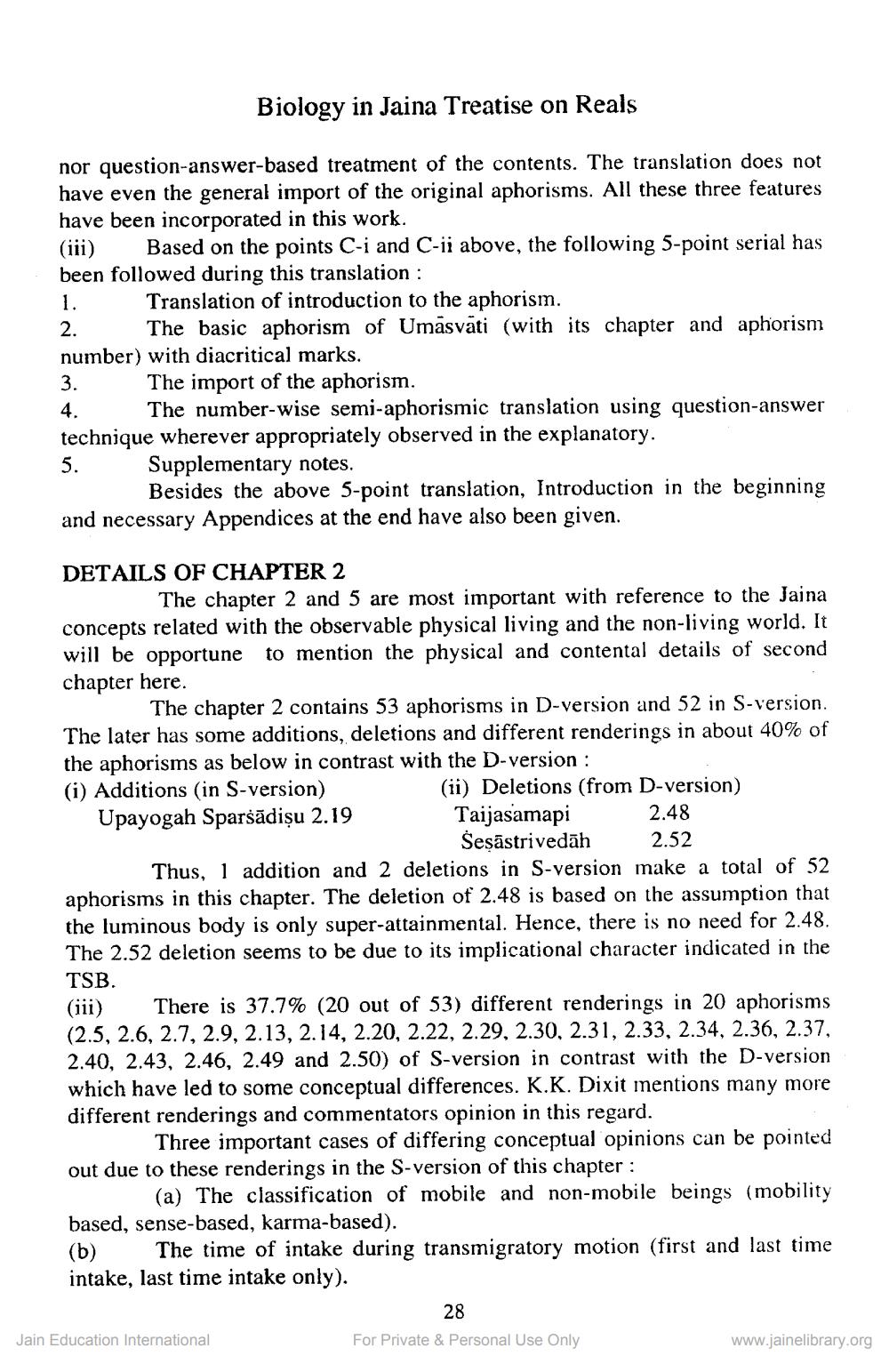________________
Biology in Jaina Treatise on Reals
nor question-answer-based treatment of the contents. The translation does not have even the general import of the original aphorisms. All these three features have been incorporated in this work.
(iii)
Based on the points C-i and C-ii above, the following 5-point serial has been followed during this translation:
1.
2.
Translation of introduction to the aphorism.
The basic aphorism of Umasvati (with its chapter and aphorism number) with diacritical marks.
The import of the aphorism.
The number-wise semi-aphorismic translation using question-answer technique wherever appropriately observed in the explanatory.
5.
Supplementary notes.
3.
4.
Besides the above 5-point translation, Introduction in the beginning and necessary Appendices at the end have also been given.
DETAILS OF CHAPTER 2
The chapter 2 and 5 are most important with reference to the Jaina concepts related with the observable physical living and the non-living world. It will be opportune to mention the physical and contental details of second chapter here.
The chapter 2 contains 53 aphorisms in D-version and 52 in S-version. The later has some additions, deletions and different renderings in about 40% of the aphorisms as below in contrast with the D-version :
(i) Additions (in S-version)
Upayogah Sparšādiṣu 2.19
(ii) Deletions (from D-version) Taijasamapi Seṣāstrivedah
Thus, 1 addition and 2 deletions in S-version make a total of 52 aphorisms in this chapter. The deletion of 2.48 is based on the assumption that the luminous body is only super-attainmental. Hence, there is no need for 2.48. The 2.52 deletion seems to be due to its implicational character indicated in the TSB.
2.48 2.52
(iii) There is 37.7% (20 out of 53) different renderings in 20 aphorisms (2.5, 2.6, 2.7, 2.9, 2.13, 2.14, 2.20, 2.22, 2.29, 2.30, 2.31, 2.33, 2.34, 2.36, 2.37, 2.40, 2.43, 2.46, 2.49 and 2.50) of S-version in contrast with the D-version which have led to some conceptual differences. K.K. Dixit mentions many more different renderings and commentators opinion in this regard.
Three important cases of differing conceptual opinions can be pointed out due to these renderings in the S-version of this chapter:
(a) The classification of mobile and non-mobile beings (mobility based, sense-based, karma-based).
(b) The time of intake during transmigratory motion (first and last time intake, last time intake only).
Jain Education International
28
For Private & Personal Use Only
www.jainelibrary.org




